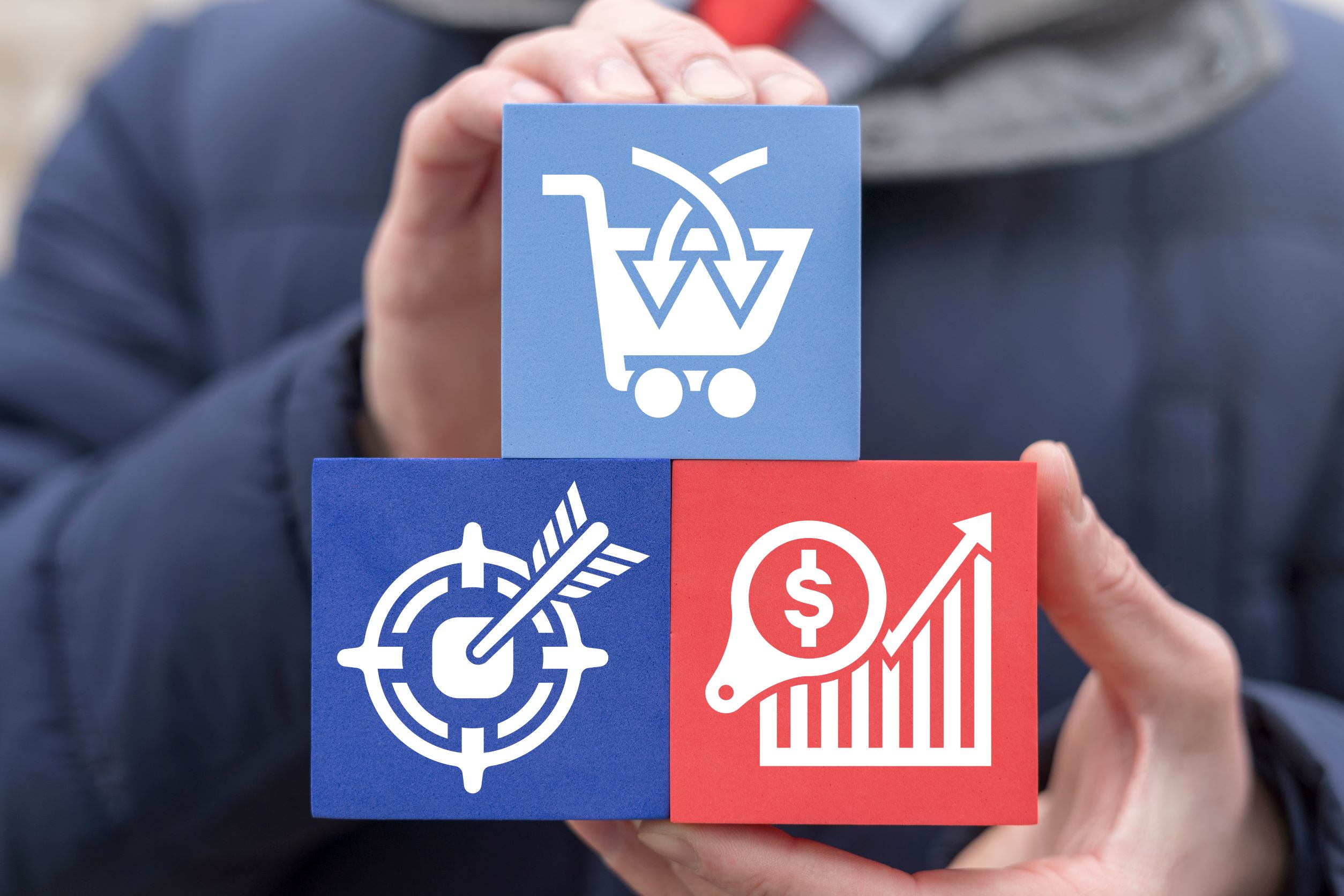If you don’t go after what you want, you’ll never have it. If you don’t ask, the answer’s always no. If you don’t step forward, you’re always in the same place. – Nora Roberts
Retail upselling is important for online sales and brick-and-mortar retail businesses. It creates opportunities to increase profits by boosting the average transaction dollar value. But how do you go about upselling in your store? It depends on the customer and the type of product. But, the good news is, there are plenty of options. In addition, it is the job of your sales team to have the tools necessary to convert when the opportunity arises! In this blog post, we’ll share five proven methods for upselling in retail, including:
- Cross-Selling
- Suggestive Selling
- Story Selling
- Product Bundling
- Solution Selling
What is upselling in the retail business?
- Upselling increases revenue by 10-30% on average (Sumo)
Successful retail upselling is getting customers to spend more than they originally planned. For instance, if a customer walks into a store intending to buy a $40 pair of jeans,but the sales rep convinces them to purchase an $80 pair of jeans, plus $100 in add-ons(socks, belt, match t-shirts). This concept is termed upselling and, if used in the right way, has the potential to boost sales significantly!
Cross-Selling Technique
Cross-selling is the practice of selling a different product to a customer to increase sales revenue. Upselling and cross-selling are often used interchangeably, which is technically not correct although the principle goal is the same. Upselling is an umbrella term that describes any action or method that increases the price and functionality of the original purchase.
Note: A cross-sell often involves discounted goods, meaning the company makes less (margin) on the sale than it would if the discounted product was sold alone. In this case, without cross-selling, the retailer may not get a good return on investment (ROI). The overall profit-margin increases due to cross-selling.
Benefits: cross-selling includes increased sales revenue, improved customer satisfaction, and enhanced customer lifetime value (CLV). Cross-selling is excellent for both the retail store and consumer when executed correctly.
Context: when a customer buys an item, the sales associate must recognize opportunities to add value to the customer’s original purchase through cross-selling.
For example, an electronics employee asks if the customer wants a screen replacement warranty with their new mobile phone. This is a cross-sell because the cell phone’s warranty is a complementary “product/service.”
In contrast, a cross-sell might be an upgrade to a more advanced mobile phone or an add-on to the original purchase, such as a charger, phone protector, or headphones.
Note: Cross-selling can include completely different products than the customer intended to buy but offers them similar or more benefits. For example, a customer could enter a hardware store intending to purchase a snow shovel and leave the store with a snowblower, which would be a considerable upsell item.
The customer may pay more in the short-term but receive more benefits overall. (ie: saved time, reduced injury, increase safety, able to help neighbors and friends etc).
Suggestive Selling Technique
Suggestive selling is a sales technique where retail employees recommend useful products to a customer that would add value to their original purchase. The principle is, if you don’t recommend or draw attention to useful products, services, or discounted goods, the customer won’t know they exist.
Note: Suggestive selling often appeals to binge purchases.
The benefits: Suggestive selling is an upselling technique that will increase average order value (AOV), even if the customer purchases only one item.
Context: retail sales associates ask open-ended probing questions to learn about a client’s interests, preferences, and needs. With that information, the sales associate can suggest relevant products and services which fulfill those needs.
Additional products that a sales associate suggests to a customer are typically less expensive than the main purchase. This increases the likelihood that the customer will add the product or service to their transaction.
Examples: Suggestive selling could include extended warranties on household autos or electronics; extra batteries for a cordless drill; a belt for jeans, etc. The upsold items are usually of lesser value than the main purchase but are intended to increase customer value and improve the customer experience.
Story Selling Technique
Story selling is connecting with the customer first and selling a product second. Story selling makes the product more human and relevant to the customer. It works by acquiring real stories from customers about how a product or service helped them. However, story selling can also work by developing fictional narratives that show customers how they can benefit from purchasing and using a product or service.
Benefits: showcasing the product in a way that will positively affect prospective clients, using real-world examples that they can relate to. Using this technique is essential to ensure that the customers are constantly entertained; if someone has a great experience with you on the phone or in-store, your selling chances increase dramatically. In addition, they will remember the story and customer experience for a long time.
Context: Some products do not sell well with other sales techniques. Some products rely on technical specifications or features to make them valuable to specific customers. When selling a product with complex features or is visually unappealing, story selling is the best approach.
For example:
“Take the Christmas pickle ornament, for example. In the late 1800s, Woolworths sold a collection of tree ornaments, glass fruits, and vegetables. The pickle wasn’t a big seller until the store began to tell people about the “German tradition” of hiding a pickle in the Christmas tree.” (Mark Schaefer)
“The person who found the pickle on Christmas morning, as the story goes, would enjoy good fortune in the coming year. There are other original stories of the Christmas pickle ornament, some involving a civil war soldier and others a rather gruesome legend involving pickle barrels.” (Mark Schaefer)
Other products with complex features or are visually unappealing:
- do it yourself (DIY) construction equipment & tools,
- fertilizer,
- computer hardware & software,
- nutritional/dieting services,
- air conditioning (AC) systems,
- home communication service bundles, etc.
Product Bundling Technique
Product bundling is a technique in which several products are grouped and sold as a single unit for one price. This strategy incentivizes customers to buy more products. McDonald’s Happy Meals are an example of a product bundle.
Benefits: Price bundling generates more sales by enticing customers to buy more items at one time.
Context: when you have a set or series of products to offer or when you want to increase the value of low-margin items. In many cases, bundling is often used in e-commerce upselling.
Example: Suppose a customer is looking to buy a new smartphone. They plan to buy a similar model and bundle plan to the one they already have. But as they make their purchase, they see a recommendation for an upgraded model with all the new features and accessories. This is an example of an upselling bundle.
Solution Selling Technique
Solution selling is a sales method wherein a sales associate is given a “problem” by the customer and thus, responds with a solution. The sales associate can recommend specific products or services that best accommodate the customer’s concerns. Solution selling is one of the best ways salespeople can sell with empathy.
Benefits:
- Selling a solution in a retail business allows the salesperson to empathize with customers’ problems and bond with them emotionally by offering a value-added solution.
- Selling a solution versus selling a product provides opportunities to recommend several products, increasing average sales revenue.
- Additional benefits to solution selling, it presents opportunities for the sales associate to combine upselling techniques and to be less concerned with price points.
Context: The key point is to sell the solution, and not to focus on the product or price. The retail sales associate needs to listen for verbal cues that sound like problems and require solutions (the sales associate solves the customer’s problem with value-added products). The second part of solution selling is to ask the customer probing and clarification questions.
For example, The following cases help to explain how to look for verbal cues, and respond with empathy statements and probing questions. When the sales associate has enough intel, a solution can be proposed.
Case 1
Hardware Store customer: “I have a leaky sink (toilet, shower)…”
Sales Associate Probe: “Oh, I’m sorry to hear that. I can definitely help, Can you tell me a little bit more about the problem? What is the damage like?”
Case 2
Clothing Store: “I have a job interview next week, and I am unsure what to wear…”
Probe: “Congratulations! What kind of job is it? Can you give me some details.”
Case 3
Pet Store: “I just got my first puppy and am not sure what she needs…”
Probe: “Nice! How old is she? What breed?”
Case 4
Electronics shops: “I am trying to create a surround sound system for my entertainment center but, I am not sure where to start…”
Probe: “Sounds great! How big is the room? How many people are you expecting to entertain?”
Remember to build trust & Add value
Each of these sales techniques is designed to upsell and bring your business one step closer to building trust and retention. So it is important to execute each of these sales techniques in a way that adds value to the customers. Note the following sales metrics:
- The probability of selling to existing customers is 60-70% (Marketing Metrics)
- The probability of selling to a new prospect is 5-20% and 68% more expensive including acquisition fees. (Sumo)
- Loyal customers spend 67% more than new ones. (Markinblog)
- Increasing customer retention by 5% increases profits by 25-95%. (Markinblog)
- 44% of companies have a greater focus on acquisition vs. 16% that focus on retention.(MarkinBlog)
Key Point: The first sale is the most difficult, but every sale after is more profitable. Therefore, as mentioned earlier, these techniques must focus on building trust and adding value.
Sample open-ended questions
These are probing questions that allow customers to provide details and guide sales people toward finding upsell opportunities.
- What challenges are you facing at this moment?
- What are the main reasons you chose to shop today?
- Do you have any questions or concerns?
- What outcome would you like to see?
- Do you have a particular brand in mind?
- Tell me about the situation.
- How would you describe __________ ?
- Do you have a price/budget in mind?
Sample close-ended questions
These are probing questions that elicit yes, or no answer. They can be used to get agreement or disagreement.
- Is this the right size?
- Do you like this color?
- Is this in your price range?
- Would you like more?
- Would you like a _____________?
Upselling is a critical tool that helps retailers increase sales, and profits and add value to the customer’s experience. By using upselling techniques, including suggestive selling, story selling, product bundling, cross-selling, and solution selling, retailers can entice customers to purchase more items and boost sales. These five methods are proven to be effective in increasing sales. Implementing them into your retail strategy will grow the business’s revenue. Have you tried any of these techniques?
Conclusion
Thank you for reading our article!
TimeWellScheduled.com is a secure, online time and attendance software that is 100% tailored to meet your scheduling needs! TimeWellScheduled facilitates employee attendance and payroll tasks enhancing your staff management capabilities. Features include everything from staffing and employee scheduling, to time clock and payroll management. Plus, our service is free for up to 10 employees!
Click: here to download our (Excel) employee scheduling template, IT’s FREE!





